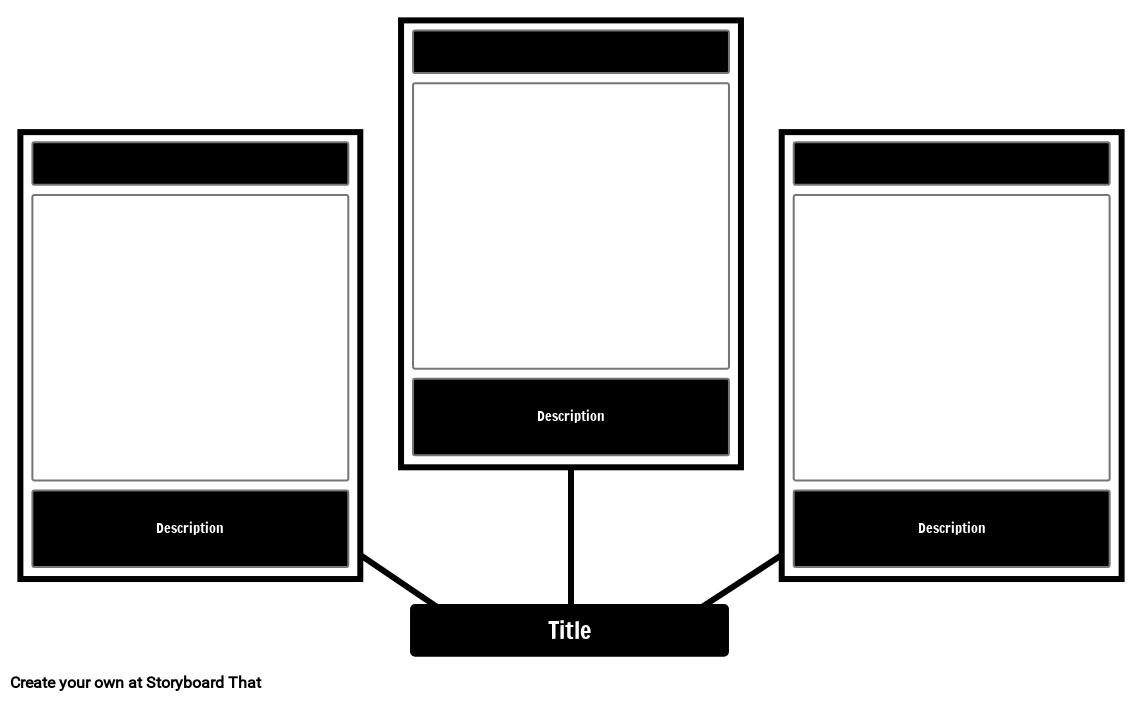Lesson Plan Overview
When creating biographies, it's both interesting and fun to learn about people’s lives when they were growing up, as everyone’s childhood is unique. In addition, one’s education says a lot about them and shapes who they become when they are older. For this activity, students will create a storyboard that highlights the date and place of birth, childhood, and education of the person they are researching. The finished product can be used as the base for a larger biography project, and makes a great tool to organize information as they're researching!
Template and Class Instructions
(These instructions are completely customizable. After clicking "Copy Activity", update the instructions on the Edit Tab of the assignment.)
Due Date:
Objective: Create a 3 cell spider map detailing information about the person’s childhood and education.
Student Instructions:
- Click “Start Assignment”.
- Label each heading with a different stage in life.
- Create an illustration that represents each heading using appropriate scenes, characters, and items.
- Write a short summary of each heading in the space below the illustration.
Lesson Plan Reference
Lesson Plan Overview
When creating biographies, it's both interesting and fun to learn about people’s lives when they were growing up, as everyone’s childhood is unique. In addition, one’s education says a lot about them and shapes who they become when they are older. For this activity, students will create a storyboard that highlights the date and place of birth, childhood, and education of the person they are researching. The finished product can be used as the base for a larger biography project, and makes a great tool to organize information as they're researching!
Template and Class Instructions
(These instructions are completely customizable. After clicking "Copy Activity", update the instructions on the Edit Tab of the assignment.)
Due Date:
Objective: Create a 3 cell spider map detailing information about the person’s childhood and education.
Student Instructions:
- Click “Start Assignment”.
- Label each heading with a different stage in life.
- Create an illustration that represents each heading using appropriate scenes, characters, and items.
- Write a short summary of each heading in the space below the illustration.
Lesson Plan Reference
How to Help Students Organize Information
Discuss Headings for a Three-Pronged Spider Map
Students can organize ideas about a person's early childhood and education by placing headings on a three-pronged spider map. Model this activity for students so they can more easily understand the concepts.
Help Students Summarize Each Section
A summary is a great way for students to explain what they know. Help students share the main idea for each section in a brief, interesting way.
Encourage Students To Create an Illustration
Drawing activates memory for students, so help students create an illustration for each part of their spider map. This will help them understand the specifics of the person's early life.
Frequently Asked Questions about Biographies: Early Childhood and Education
Why should I study information about a person's childhood and education?
Because each childhood is unique, it is interesting and fun to learn about other people in biographies. Understanding a person's upbringing can help you understand their later choices.
How can I organize information about early childhood and education?
Using a spider map will help you to organize the information about a person's life more easily. Write a heading for each of the three sections and then summarize the information you found out.
Is there any room for a picture on a spider map?
Yes, adding pictures to your spider map is a good idea. Illustrations help students to learn concepts more easily and they are a great way to help understand a person's life and early education.
More Storyboard That Activities
Biographies
Testimonials

“By using the product, they were so excited and they learned so much...”–K-5 Librarian and Instructinal Technology Teacher

“I'm doing a Napoleon timeline and I'm having [students] determine whether or not Napoleon was a good guy or a bad guy or somewhere in between.”–History and Special Ed Teacher

“Students get to be creative with Storyboard That and there's so many visuals for them to pick from... It makes it really accessible for all students in the class.”–Third Grade Teacher
© 2026 - Clever Prototypes, LLC - All rights reserved.
StoryboardThat is a trademark of Clever Prototypes, LLC, and Registered in U.S. Patent and Trademark Office









